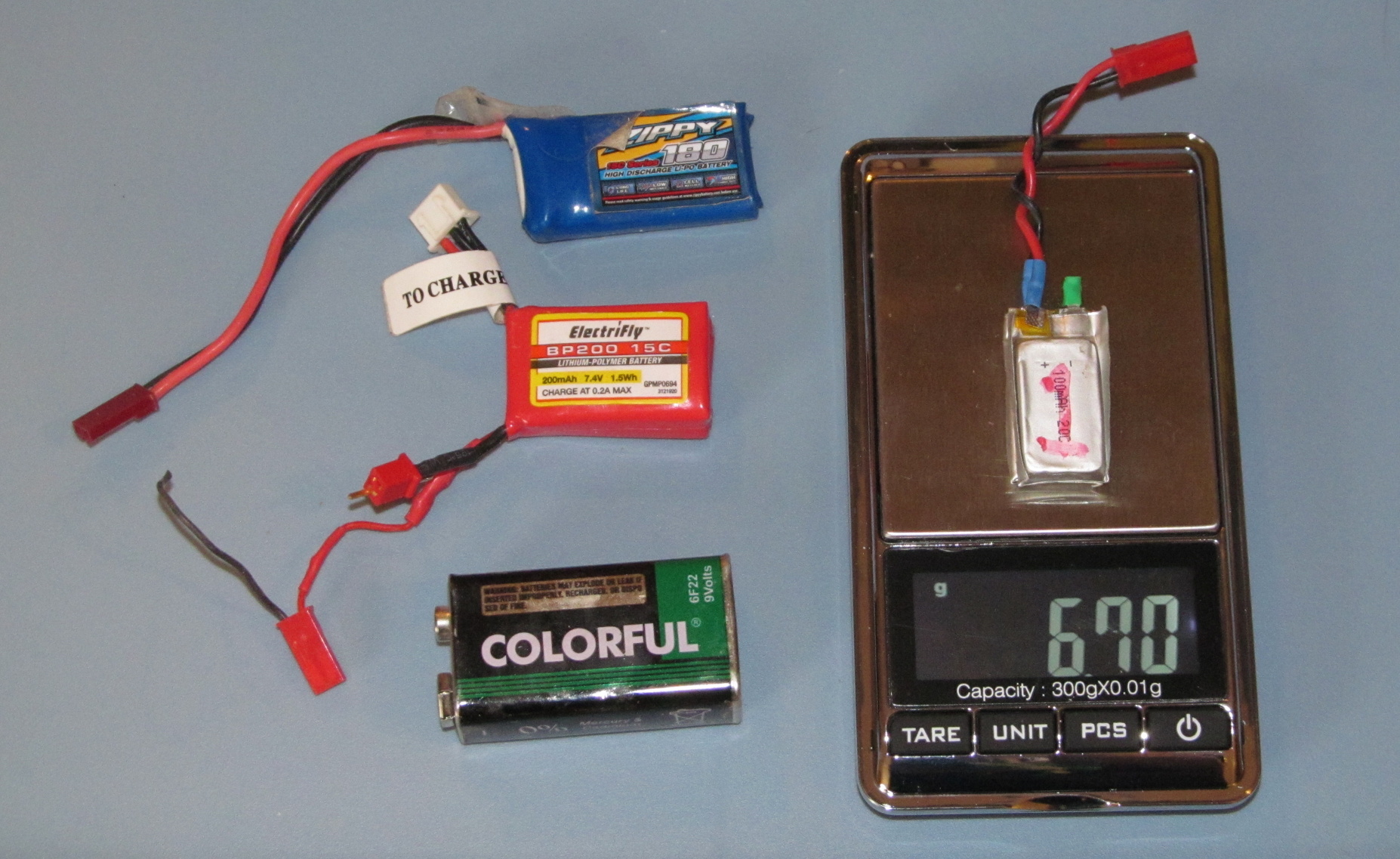https://www.hobbyking.com/hobbyking...300mah_2S_45_90C_Lipo_Pack_US_Warehouse_.html
I know nothing about these LiPo batteries but this seems to fit the bill as per Bob; though It states 7.4v which is midrange operating voltage for my timer. I’d prefer something closer to the 9v but I’m having zero luck wading through the 10x27^63 varieties listed here.
So will this work?
And why does a battery have four lead wires?
And what does 45c discharge mean?
And what kind/type of charger will I need?
And who invented liquid soap and why?
LiPo Primer.
Nomenclature:
3.7 volts nominal (4.2 volts fully charged) = 1 cell = 1S
7.2 volts nominal (8.4 volts full charges = 2 cells in series = 2S (Replaces 9 volt battery)
10.8 volts nominal (12.6 volts full charges = 3 cells in series = 3S (Replaces 12 volt battery)
Power and charging cables.
There a 2 wire bundles on most LiPo battery packs.
1.) The heavy red and black wires supply the battery power.
2.) The other bundle is the power balancing charger cable. It is designed to be used with a LiPo charger and insures that all the cells are fully charged independently and prevent over or under charging.
3.) You need a LiPo charger. I recommend purchasing a charger that works on 1S to 4 S packs (minimum) and can work from you 120 volt wall plug at home and a 12 volts power port in your car. Costs are the same.
Battery Ratings:
LiPos are rated for current delivery as well as voltage.
A 2S Lipo is listed as 7.2 volts nominal and has a milliamp- or amp-hour rating. A 300 mah battery is rated to deliver 300 ma for 1 hour. That is the 1 C rating.
If a 300 mah battery is rated at 10 C it can continuously deliver 3000 ma or 3 A until the battery is discharged. The time it will to this is the 1 / the C rating of the battery, in this case, 1 / 10 = 0.1 hour = 6 minutes. If the rating was 45 C, the battery could deliver 45 C = 13.5 amps for 1/C = 1/45 hours = 0.0222 hours = 1.33 minutes. Most batteries have a maximum charge rating in C as well. If this battery is rated for a 2 C charge. You can charge the battery a 2 x .3 = 600 ma = 0.6 amps and the charge time for a fully discharge battery would be 1/C = 1/2 = 0.5 hour = 2 minutes. Some batteries also have a burst rating. This is the current that the battery can output for 5 seconds without reducing the capacity. Most of the time the burst current is twice the steady state current rating.
Lastly, neither of the current rating describe the short circuit current. LiPo batteries have very low internal resistance so even a 300 mah battery might put out over 100 amps on a short so you have to be careful not to short the battery.
Don't care who invented liquid soap. It's mostly water so it's more expensive than bar or powdered soap........
Bob







